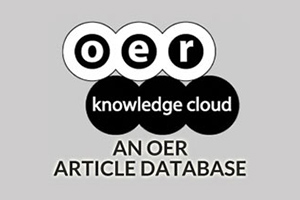The Effects of Extraneous Load on the Relationship Between Self-Regulated Effort and Germane Load Within an E-Learning Environment
DOI:
https://doi.org/10.19173/irrodl.v18i5.3028Keywords:
e-learning, cognitive load, distance learning, extraneous load, germane load, online learning, self-regulated effort, self-regulated learningAbstract
Online instructors need to avoid unclear and confusing explanations of content, which can reduce the quality of learning. Extraneous load is reflective of poor instruction, in that it directs student effort towards processing information that does not contribute to learning. However, students may be able to manage poor instruction through effort regulation. Students who show high levels of effort have been shown to overcome poor instruction in some cases. This study analyzed survey responses from South Korean university students studying online (n = 1,575) to examine the relationship between self-regulated effort and germane load within varying extraneous load conditions. The experimental design separated extraneous load responses into three conditions (low, medium, high). Within each extraneous load condition, self-regulated effort responses were also separated (low, medium, high). The results showed that as extraneous load increased, self-regulated effort had a weaker relationship with germane load. It was also found that the use of effort regulation is effective only when dealing with low and mid-level extraneous load situations and that use of such strategies within high extraneous load situations was not effective. These results show the importance of improving instruction to reduce extraneous cognitive load, in that, not even high levels of effort can overcome poor quality instruction.
Publication Facts
Reviewer profiles N/A
Author statements
- Academic society
- N/A
- Publisher
- Athabasca University Press
Published
How to Cite
Issue
Section
License
This work is licensed under a Creative Commons Attribution 4.0 International License. The copyright for all content published in IRRODL remains with the authors.
This copyright agreement and usage license ensure that the article is distributed as widely as possible and can be included in any scientific or scholarly archive.
You are free to
- Share — copy and redistribute the material in any medium or format
- Adapt — remix, transform, and build upon the material for any purpose, even commercially.
The licensor cannot revoke these freedoms as long as you follow the license terms below:
- Attribution — You must give appropriate credit, provide a link to the license, and indicate if changes were made. You may do so in any reasonable manner, but not in any way that suggests the licensor endorses you or your use.
- No additional restrictions — You may not apply legal terms or technological measures that legally restrict others from doing anything the license permits.








